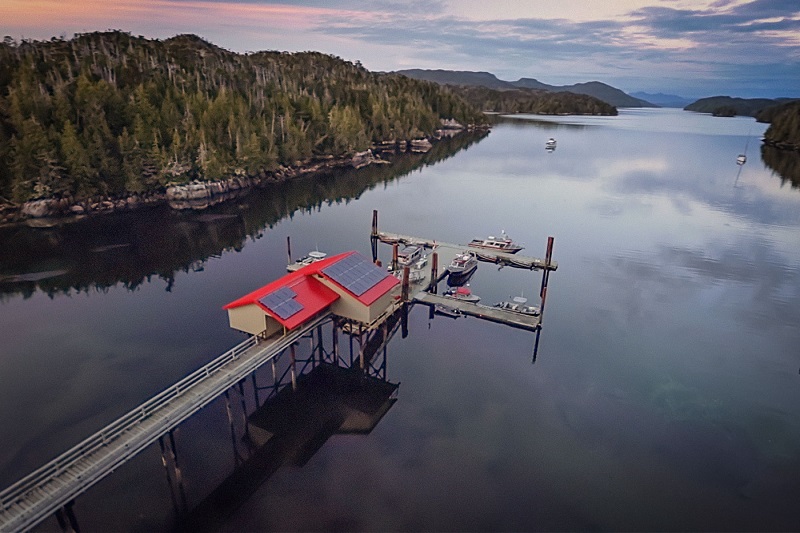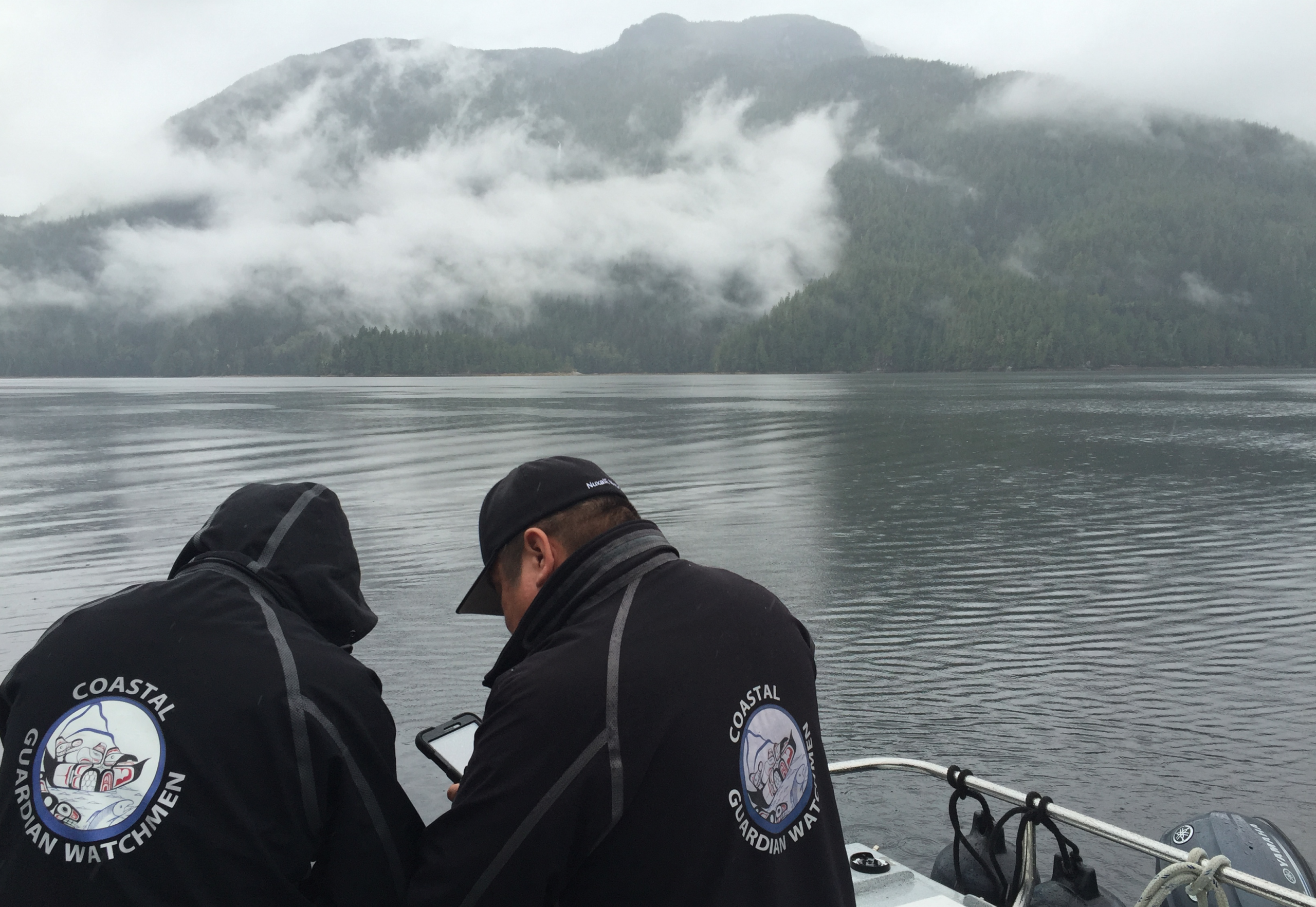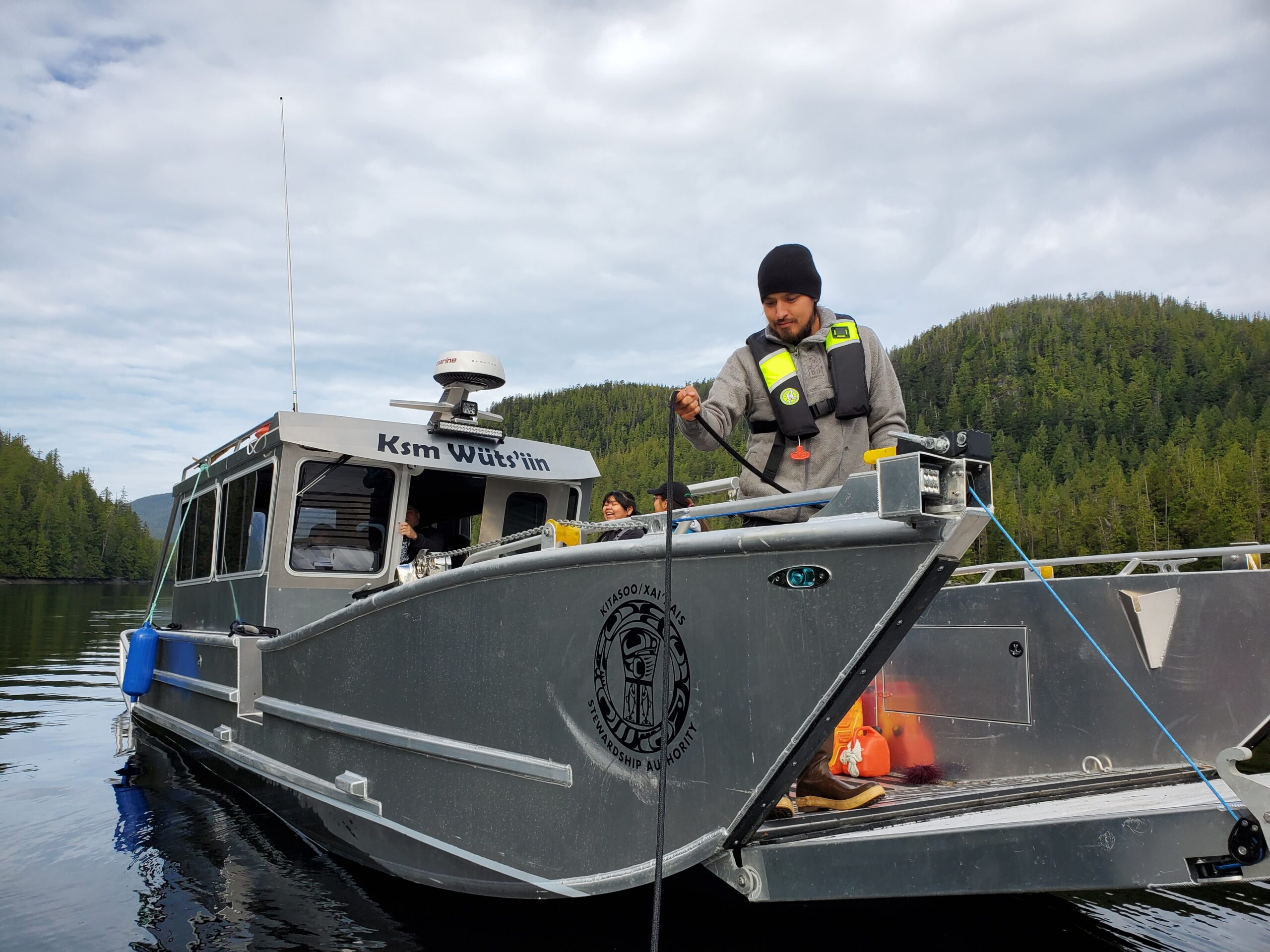At the Hakai Institute on Calvert Island, stewardship students learn from the land, while forging new relationships with each other and researchers from far and wide.
In the “Calvert” classroom, with walls adorned with giant halibut and other local fish, a group of 10 stewardship students greet the end of class by releasing some pent-up energy, then grab their field books and surveying tools for an afternoon spent analyzing soils and organisms down near the beach.
The students are brushing up on land monitoring skills during second-year studies for the Stewardship Technicians Training Program, and they’re happy to be doing so at the Hakai Institute.
Taking its name from the marine protected area that surrounds it—Hakai Lúxvbálís Conservancy—the scientific research facility is best described as an “ecological observatory,” designed to monitor coastal ecosystems over the long term and at a large scale. It’s also a cherished hub of activity for far-flung researchers and local communities alike, convening a diverse array of people and groups together in the only settled spot on Calvert Island.
“When we bought this property in 2009, there was a lot of animosity between the previous fishing lodge and people in nearby communities,” says Christina Munck, who co-directs Hakai, along with her husband Eric Peterson. “The lodge was very exclusive and kept locals away, and it also kept people away from accessing the BC Parks side of the site.”
The world-class research facility was financed by the couple’s charitable organization, the Tula Foundation, established in 2001 using funds from the sale of a health-based tech company that Peterson had started in Waterloo, Ontario. The Foundation brings together their shared interests in health care and the environment, and puts a heavy focus on community engagement and supporting “on-the-ground” programs that can produce tangible results.
A year after the purchase, Munck says they were still figuring things out: “Who would come here and what would they do?” The couple already had extensive ties with researchers throughout BC, so it made perfect sense to build a research institute that would offer a central location for undertaking science projects along the Central Coast.
They visited neighbouring communities, and met with the Chiefs and Councils of both the Wuikinuxv and Heiltsuk Nations. “I could understand if they were a little skeptical in the beginning,” says Munck. “They’d either been ignored or treated poorly by other outsiders in the past, so why would we be any different?” It took a while, but after being upfront about what they were doing and why, the couple finally received that blessing and support.
Munck says it was crucially important to develop strong relationships early on. “It’s a trust thing,” she explains. “When you’re on the Central Coast, you quickly realize that you’re all neighbours, and you have to be good and open with your neighbours. You better decide to be part of the community, or you simply won’t be.” Those community relationships have flourished over time, strengthened by Hakai’s willingness to host stewardship training courses like this one—providing comfort, excellent food and a great setting for students to learn from surrounding lands and waters.
Hakai has also hosted the annual gatherings for Coastal Guardian Watchmen every year since 2010, with the exception of only one gathering—Haida Gwaii in 2015. “In the first gathering, we didn’t really know anyone,” recalls Munck. “All the Guardians came in separate boats, because they didn’t know each other that well either. But by the end, they all left the dock mixed together in the same boats.”
Munck says the same scenario happens at Hakai-hosted training courses as well. “It’s amazing to see the transformation during training,” she says. “They come here acting very shy with us and with the other students, but by the end they’re all like family.”
In future, Munck says they hope to share with the program some of the expertise and technical support of Hakai researchers. “We look at this training as a two-way street,” she says. “We couldn’t do this without their participation, and our staff learns a lot from them because they have all that local knowledge.”


